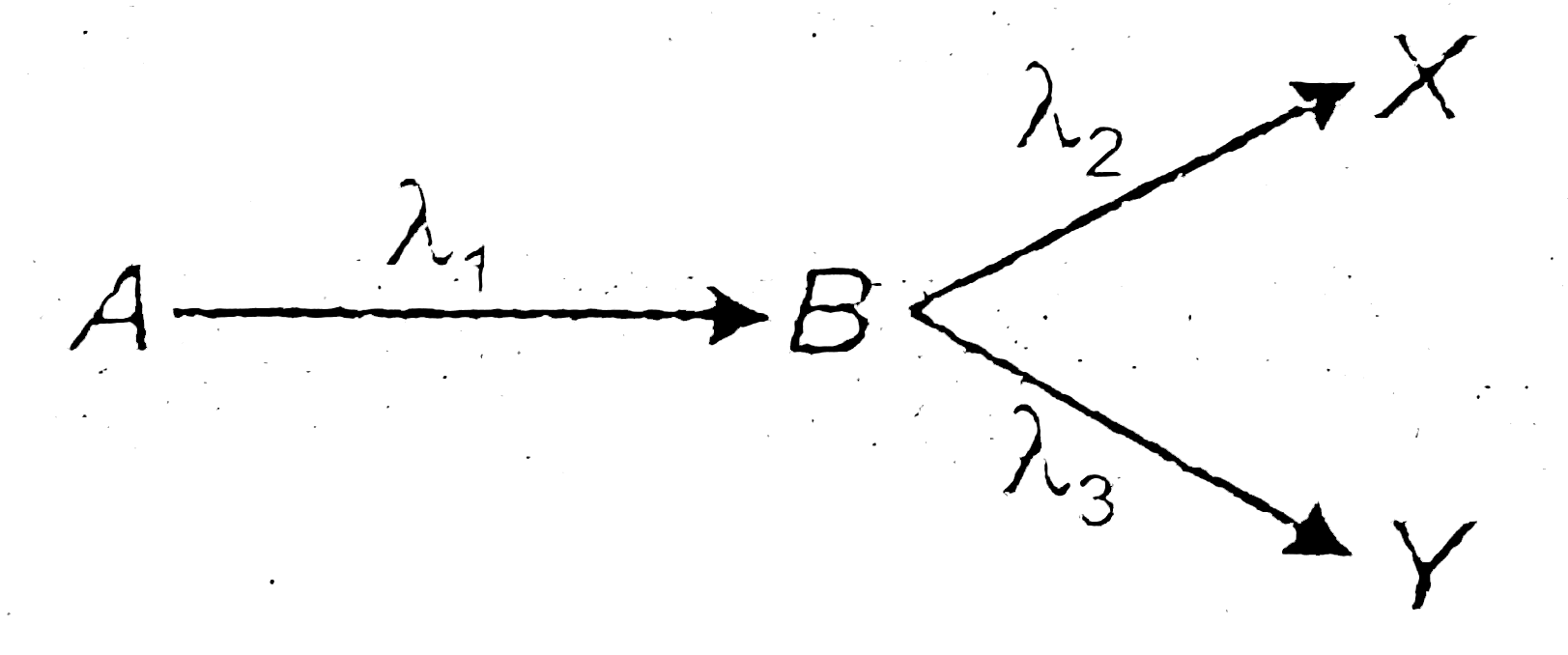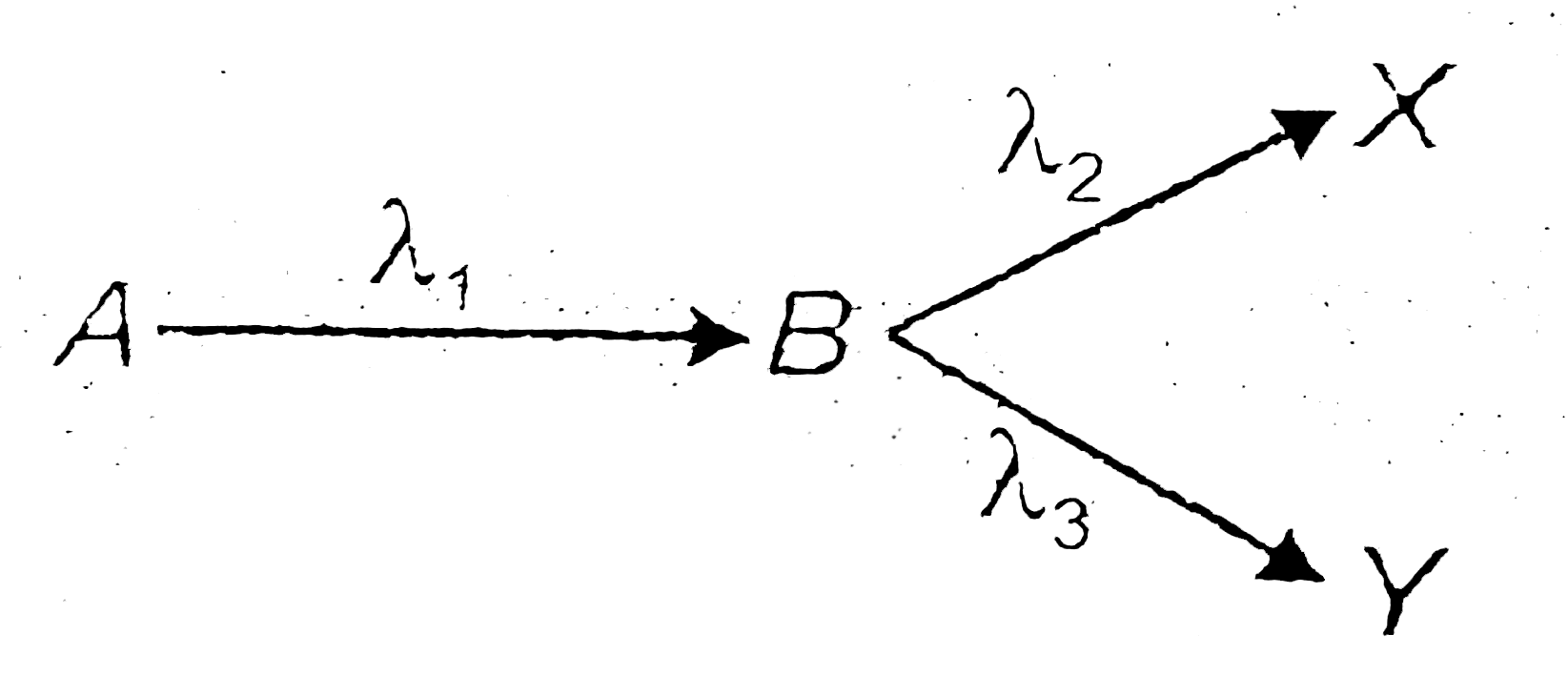A particular type of nucleus whose decay constant is λ is produced at a steady rate of p nuclei per second. Show that the number of nuclei N present t second after the production starts is N=Pλ[1−e~λt].
The instantaneous rate of growth of the nuclei is
dNdt=p−λN or dBp−λN=dt
On integrating,
−1λIn|p−λN|=t+c
At t=0, N=0⇒c=−In|p|λ
or −1λ[In|p−λN|−In|p|]=t or In∣∣∣1−λNp∣∣∣=−λt
or N=pλ[1−e−λt]
Topper's Solved these Questions
- BOOK - FIITJEECHAPTER - MODERN PHYSICSEXERCISE - Illustration10videos
MODERN PHYSICS
- BOOK - FIITJEECHAPTER - MODERN PHYSICSEXERCISE - Solved Problems10videos
MODERN PHYSICS
- BOOK - FIITJEECHAPTER - MAGNETISM AND MATTEREXERCISE - ASSIGNMENT PROBLEMS OBJECTIVE : (LEVEL -II) (MULTI CHOICE SINGLE CORRECT)20videos
MAGNETISM AND MATTER
- BOOK - FIITJEECHAPTER - OPTICSEXERCISE - NUMERICAL BASED QUESTIONS2videos
OPTICS
Similar Questions
From a radioactive substance n1 nuclei decay per second at an instant when total number of nuclei are n2. Find half-life of the radioactive substance.
View SolutionThe rate at which a particular decay process occurs in a radio sample, is proportional to the number of radio active nuclei present . If N is the number of radio active nuclei present at some instant, the rate of change of N is dNdt=−λN. Consider radioactive decay of A to B which may further decay either to X or to Y, λ1,λ2andλ3 are decay constants for A to B decay , B to X decay and B of Y decay respectively. if at t=0 number of nuclei of A,B , X and Y are N0,N0,zero and zero respectively

and N1,N2,N3,N4 are number of nuclei A,B , X and Y at any instant.
The number of nuclei of B will first increase then after a maximum value, it will decreases, ifView Solution
Knowledge Check
- Question 1 - Select One
A radioactive substance with decay constant of 0.5s–1 is being produced at a constant rate of 50 nuclei per second. If there are no nuclei present initially, the time (in second) after which 25 nuclei will be present is
A1Bln 2Cln (4/3)D2 ln (4/3) - Question 2 - Select One
A radioactive substance with decay constant of 0.5s−1 is being produced at a constant rate of 50 nuclei per second. If there are no nuclei present initially, the time in second) after which 25 nuclei will be present is
A1B2ln(43)Cln2Dln(43) - Question 3 - Select One
A radioactive substance with decay constant of 0.5s−1 is being produced at a constant rate of 50 nuclei per second . If there are no nuclei present initially, the time (in second) after which 25 nuclei will be present is :
A1Bln 2Cln(4/3)D2 ln (4/3)
The rate at which a particular decay process occurs in a radio sample, is proportional to the number of radio active nuclei present . If N is the number of radio active nuclei present at some instant, the rate of change of N is dNdt=−λN. Consider radioactive decay of A to B which may further decay either to X or to Y, λ1,λ2andλ3 are decay constants for A to B decay , B to X decay and B of Y decay respectively. if at t=0 number of nuclei of A,B , X and Y are N0,N0,zero and zero respectively

and N1,N2,N3,N4 are number of nuclei A,B , X and Y at any instant.
At t=∞, which of the following is incorrect ?View SolutionA radioactive nuclide is produced at the constant rate of n per second (say, by bombarding a target with neutrons). The expected number N of nuclei in existence t s after the number is N0 is given by
View SolutionThe rate at which a particular decay process occurs in a radio active sample, is proportional to the number of radio active nuclei present. If N is the number of radio active nuclei present at some instant, the rate of change of N is dNdt=−λN.
_E01_161_Q01.png)
Consider radioavtive decay of A to B which may further decay, either to X or to Y, λ1,λ2 and λ3 are decay constants for A to B decay, B to X decay and B of Y decay respectively. If at t=0 number of nuclei of A, B, X and Y are N0,N0, zero and zero respectively and N1,N2,N3,N4 are number of nuclei A,B,X and Y at any intant.
At t=∞, which of the following is incorrect ?View SolutionA radioacitve nucleus is being produced at a constant rate α per second. Its decay constant is λ. If N0 are the number of nuclei at time t=0, then maximum number of nuceli possible are .
View SolutionA radioactive nucleus is being produced at a constant rate α per second. Its decay constant is λ. If N0 are the number of nuclei at time t=0, then maximum number of nuclei possible are.
View Solution

